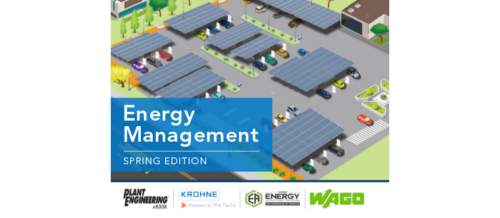GAS TECHNOLOGY: Liquid Desiccant Systems Finding New Friends
Green Features Also Good For the Pocketbook
Liquid desiccant dehumidification systems fill an important niche in industrial environment management by providing highly efficient and tightly controllable humidity levels, both for building comfort and process control. One of the major providers of these systems is Kathabar-Niagara, providers of both Kathabar and Niagara Blower “No-Frost®” liquid desiccant dehumidification systems.
Wide Range of Industrial Applications
Kathabar-Niagara spokesperson Jennifer Dorman points out that because of growing interest in green technology, her firm sees many industrial markets as offering opportunities. “Liquid desiccant dehumidification is extremely energy efficient and can make use of low cost coolant and heat sources. This technology is ideal for biotech labs, brewing, bulk handling, chemical facilities, cold storage plants, film and glass production, food processing and packaging, pharmaceuticals, plastics plants and water treatment facilities.”
According to Dorman, liquid desiccant systems offer a simple design approach that requires less energy than conventional refrigeration or dry desiccant systems. “Due to their design principle, where air passes through the desiccant spray, the system also provides microbiological decontamination.” She points out that the liquid desiccant formulations utilized by both Kathabar and “No-Frost” systems act as effective biocides to capture and neutralize airborne pathogens. “In addition, there is no potential for cross-contamination of airstreams.”
Improve Product Quality, Consistency
Liquid desiccant systems have the potential to improve the quality of manufactured products by eliminating possible mold growth, neutralizing airborne microorganisms, extending product shelf life and maintaining a consistent manufacturing environment. In processes that require product drying, these systems can lower production cost and accelerate drying. Maintaining correct humidity levels helps prevent product sticking or lumping, thus avoiding blockages in conveying lines.
One approach that has been recently developed is the use of solar energy to economically regenerate the liquid desiccants. In the right application, this approach can lead to significant utility savings for applications requiring levels as low as 29% relative humidity. According to Dorman from Kathabar-Niagara, these systems can also use low cost cooling tower water as a coolant source in the desiccant regeneration process. In addition, for applications that require large amounts of outside air, manufacturers offer enthalpy recovery devices.
Heat Recovery Potential
The Niagara “No-Frost” unit also offers an option to incorporate a distillation column concentrator (DCC), a highly efficient desiccant concentrator. This option provides reliable moisture removal with even more stable air conditions and increased energy efficiency by recovering up to 75% of heat energy in the form of hot water. It can utilize low pressure steam, natural gas or rejected condenser energy as heat source options. With this technology, the energy efficiency of the unit is increased and even higher levels of dehumidification are achievable.
For industrial operators who are looking for a more stable humidity environment, the modern liquid desiccant system is a reliable and efficient solution. Manufacturers offer technical assistance and economic analysis programs to assist in the selection process. Whether your issue is employee comfort or product quality assurance, liquid desiccant systems are worth considering.
More Info
Advantix Systems
www.advantixsystems.com
Kathabar and Niagra Blower Systems
www.niagrablower.com
Do you have experience and expertise with the topics mentioned in this content? You should consider contributing to our CFE Media editorial team and getting the recognition you and your company deserve. Click here to start this process.


